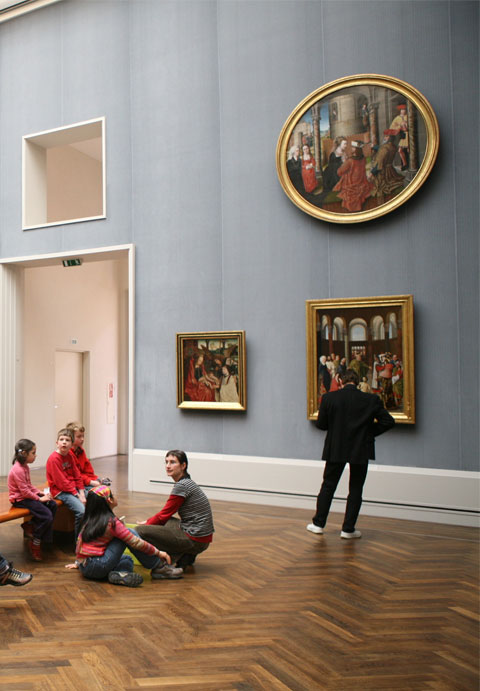Gemäldegalerie of Berlin
Museum Overview of the Gemäldegalerie, located in Berlin, Germany. Learn about the museum history and art collection available to visit.
The Gemäldegalerie, located in Berlin, Germany, boasts of the important collections of painting ranging from the thirteenth to eighteenth century Europe. The exhibition includes various masterpieces by artists from all ages of art history like van Eyck, Rubens, Bruegel, Dürer, Vermeer, Raphael, Tizian, Caravaggio, and Rembrandt. Great masters represent several old German paintings of the Renaissance and Late Gothic eras as Albrecht Dürer, Konrad Witz, Holbein, Baldung Grien, and Cranach.
History of the Museum
The collection was opened initially to the public in early 1830. The newly built museum is located at the Kulturforum and has approximately 7,000 square meters of space for exhibition. A complete tour of its 72 rooms covers two kilometers. Also, two of the main sections are covered with Italian painting from early 13th to 16th century as well as Netherlandish painting from the 15th to 16th century.
The paintings occupy the upper floor along with the collection of relics on the lower side. At the time it was established, the collection contained almost 1200 Audio tours, with 160 from the seventeenth-century collection from Marchese Vincenzo Giustiniani, which was bought in Paris in late 1815.
Type of collection
The Gemäldegalerie has a scientific methodology for collecting and displaying the art. Every room can be seen as a single statement regarding one - five artists in a particular period or following a different style. Presently, the German art collection is the finest as well as the most comprehensive in the globe, rivaled only by Munich and Vienna, and the Early Italian and Netherlandish collections. The holdings of French, Spanish, and British art are smaller. The notable rooms include an octagonal Rembrandt room as well as a room containing five Madonnas by Raphael.
There are two separate paintings by Vermeer in that collection, “The Glass of Wine” with the “Woman with the Pearl Necklace."
Other prominent experiences include the Flemish moralistic paintings which span across the northern side of the museum, displaying an interplay between the sensual inspirations of artists and the religious motives of artists' patrons.

In the Renaissance section, Caravaggio's Amor Victorious is exhibited alongside Sacred Love Versus Profane Love by Giovanni Baglione. The two paintings are archaeologically linked; after hearing of the disreputable portrayal of the theme in "love conquers all" in the work of Caravaggio, a Roman bishop commissioned Giovanni Baglione's reply, which mimics the style of Caravaggio, with the features of Amor.
Various Italian, English, French, German painting from the eighteenth century are presented in six rooms. The collection of paintings includes art by Canaletto, Pesne, Watteau, and Gainsborough.
The main gallery has one thousand masterpieces, and these paintings are accompanied by four hundred works exhibited in a study gallery.
Visitors have access to the digital gallery with information in French, German, and English. Audio-tours are available in English and German as well.


